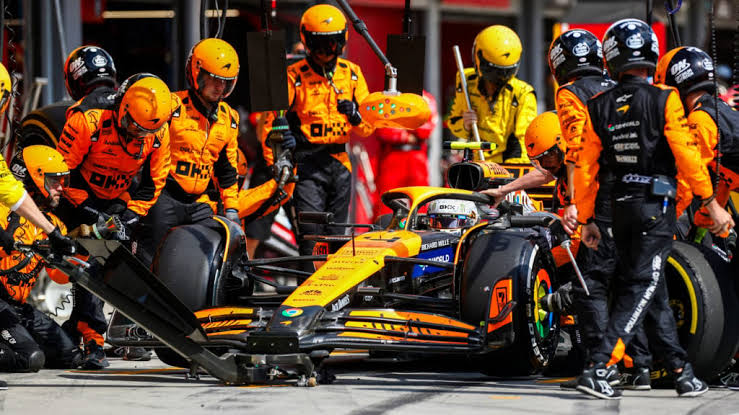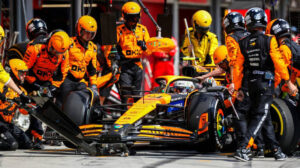
McLaren’s team orders at the Hungarian Grand Prix may have been seen as a strategic necessity by some, they also sparked a broader conversation about the role and impact of team orders in Formula 1
In Hungary, McLaren’s decision to
enforce team orders at the Hungarian
Grand Prix became a topic of significant
discussion and controversy within the
Formula 1 paddock. Craig Slater, a
renowned F1 journalist, sheds light on
the paddock’s reaction to McLaren’s
move, which involved instructing one of
their drivers to cede position to the other
during the race.

At the heart of the issue was McLaren’s
strategic choice to favor one driver over
the other in the heat of the race. This
decision wasn’t without precedent; team
orders have been a part of Formula 1 for
decades, often deployed to maximize
championship points or protect a lead in
the constructors’ standings. However, the
application of these orders can lead to
varying reactions, particularly from the
drivers, teams, and fans.
According to Slater, the broader reaction
in the paddock was mixed, reflecting the
complex dynamics of Formula 1 racing.
On one hand, McLaren’s strategy was
seen as a necessary measure to secure
the best possible outcome for the team.
In a championship battle, prioritizing
one driver can be a tactical move aimed
at consolidating positions or capitalizing
on a specific race scenario. This view was
supported by some within the paddock,
who acknowledged the practical benefits
of such decisions in the context of a long
and grueling season.
On the other hand, there was notable
criticism from various quarters. Some
commentators and team members felt
that McLaren’s team orders undermined
the competitive spirit of racing. Team
orders can sometimes appear to
contradict the ethos of racing where
drivers are expected to compete on an
equal footing. This sentiment was echoed
by a few drivers who viewed the move as
an imposition on their ability to race
freely and showcase their skill.
The discussion also highlighted broader
issues about the fairness and
transparency of team orders. Questions
were raised about whether such
decisions are always in the best interests
of the team or if they disproportionately
favor one driver over another. For
instance, if one driver is given a clear
advantage through team orders, it could
impact the dynamics of driver
relationships within the team, potentially
leading to dissatisfaction or tension.
Slater also pointed out that McLaren’s
decision was not an isolated case. Similar
strategies have been employed by other
teams in the past, and the paddock’s
reaction often varies depending on the
specific circumstances and the perceived
impact on the championship. This
ongoing debate underscores the
complexities of managing a Formula 1
team where balancing competitive
fairness and strategic advantage is a
constant challenge.
Overall, while McLaren’s team orders at
the Hungarian Grand Prix may have
been seen as a strategic necessity by
some, they also sparked a broader
conversation about the role and impact
of team orders in Formula 1. The
reaction from the paddock reflects the
multifaceted nature of the sport, where
tactical decisions can have wide-ranging
implications beyond just the race results.







